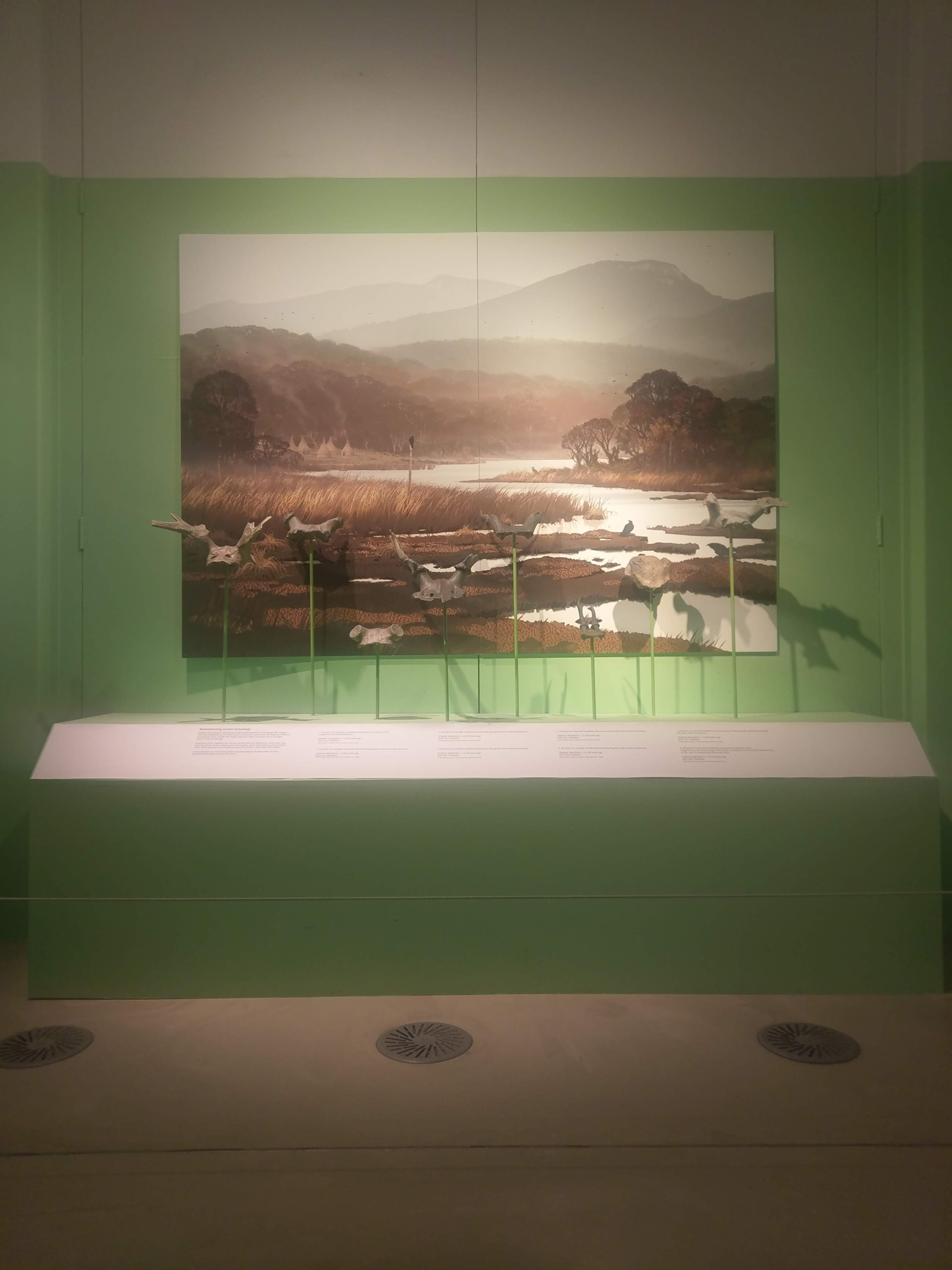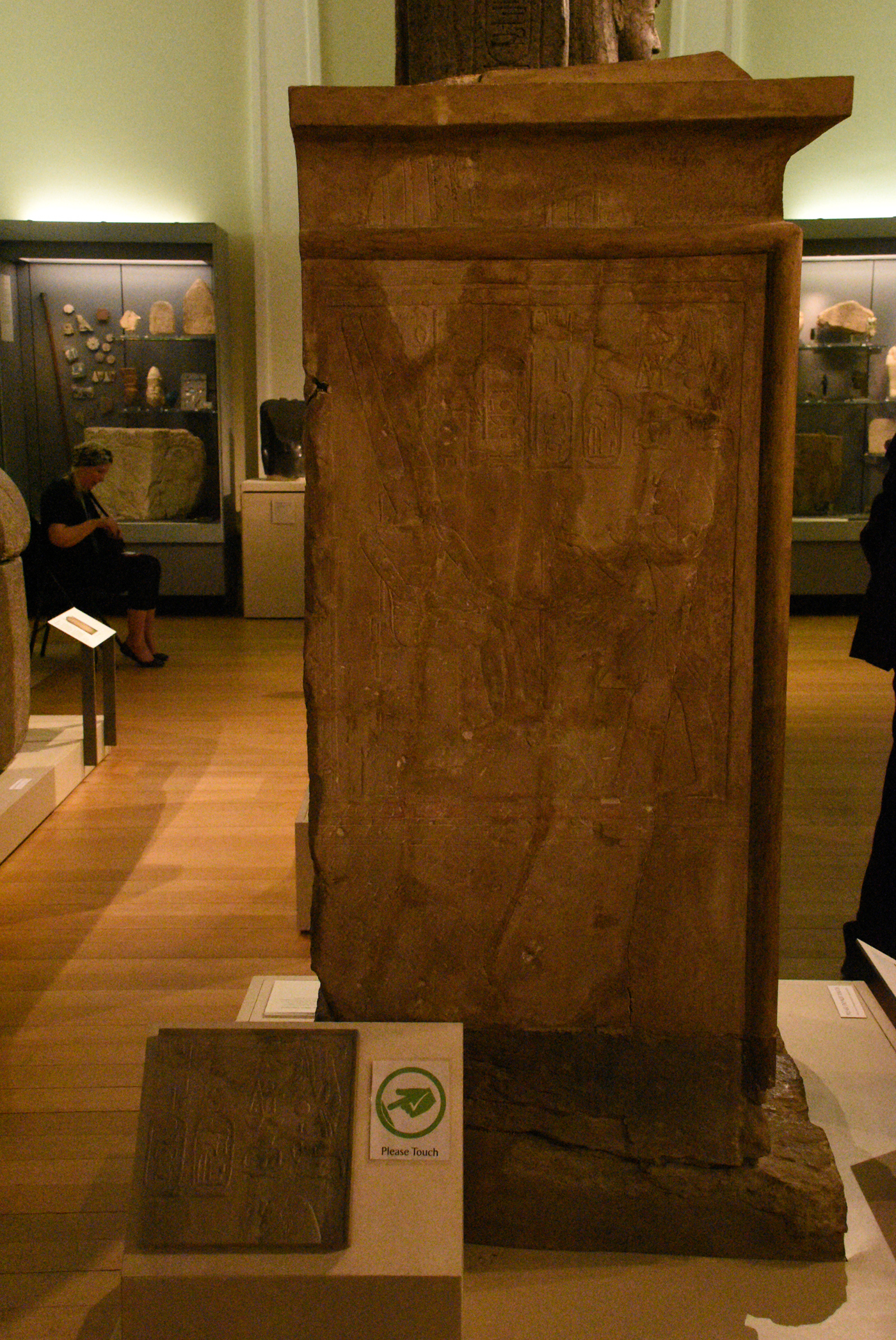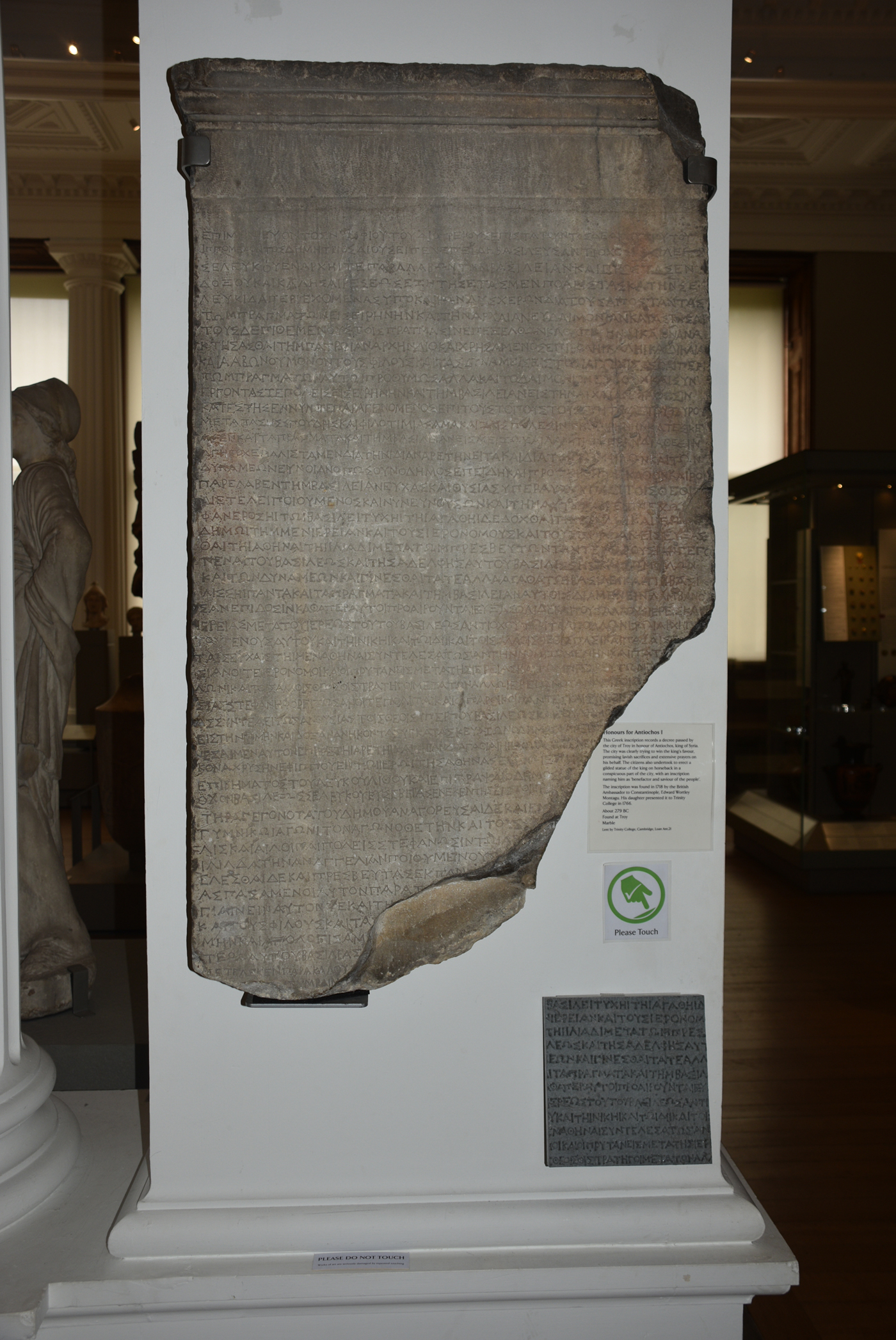3D printing as a technology has been championed in the museums and heritage sector for its capacity to offer new ways to interact with collections (Coates Reference Coates2019). Yet such prints are neither new nor emerging, as the potential for low-cost printing has been discussed in the archaeological sector since as early as 2014 (Reilly Reference Reilly2015). Moreover, the wider—particularly ethical—issues around the deployment of 3D printing have been discussed in detail following the “reconstructing” of the Palmyra Arch by the Institute for Digital Archaeology (Khunti Reference Khunti2018). More recently, conversation has moved to discussing the potential for museum collections to use 3D prints, in place of original artifacts, to provide tactile experiences of collections without impacting the conservation or preservation of the original objects (Di Giuseppantonio Di Franco et al. Reference Di Giuseppantonio Di Franco, Camporesi, Galeazzi and Kallmann2015).
This review looks to add to these critical conversations by considering two different implementations of 3D printing in museums at Cambridge, specifically the Museum of Archaeology and Anthropology (MAA) and the Fitzwilliam Museum. The former seeks to engage audiences to consider the value that 3D printing as a technology can offer to research objects that are widely distributed and difficult to preserve, as well as to demonstrate typographic variation between objects. The latter aims to aid conservation of in-gallery objects by encouraging visitors to touch comparable objects and thereby fulfill their tactile exploration in a different way. These examples demonstrate that while 3D printing offers new avenues into public engagement, the museum sector has yet to fully engage with the potential of the technology. Given the cost of production, it is concerning that there is a lack of critical engagement with what these prints offer—whether as a method of display or as a tactile experience—and how the museum can effectively deploy them as an augmented experience.
3D PRINTING FOR RESEARCH
Digital approaches have long been adopted in archaeology and material studies to allow access to disparate collections that are scattered around the world. Reflectance Transformation Imaging (RTI), or polynomial texture mapping, was championed as a method to study cuneiform (Earl et al. Reference Earl, Martinez and Malzbender2010); laser scanning has been suggested as a method to preserve and share archaeological sites with audiences around the world (CyArk 2018); and photogrammetry (particularly through the success of Sketchfab) has been used to share 3D models of artifacts globally. With the widespread low-cost development of 3D photogrammetry, 3D printing has offered the potential to take these resources a step further, allowing objects from around the world to be physically (re)created. In doing so, these objects can be compared in one place, recorded, and sent to experts from the field. This also allows international teams to work simultaneously on the objects (Jones Reference Jones2012).
Although there is a lot of potential for 3D technologies to enhance research activities and support specific research questions, their uses can also be problematic. The Palmyra Arch is a very high-profile case that highlights some of the wider issues with well-funded initiatives profiting from the scanning and reproduction of objects without providing access to the results or any direct advantage to indigenous groups (Thompson Reference Thompson2017). CyArk is another high-profile example of an initiative that can be heavily critiqued for digital colonialism in terms of its practices related to ownership and copyright. Furthermore, there are extensive concerns over the long-term storage of this type of data, which have yet to be addressed by many of these platforms and archives (Clarke Reference Clark2015).
Below I present two specific 3D-printing engagement initiatives with the aim of critically exploring the relationship between their intentions and their outcomes.
THE STAR CARR HEADDRESSES: MUSEUM OF ARCHAEOLOGY AND ANTHROPOLOGY
As part of the exhibition A Survival Story at the Museum of Archaeology and Anthropology in Cambridge, a series of Mesolithic headdresses from the Star Carr site in Yorkshire were 3D printed to add to visitors’ understanding of the artifacts and enhance their overall visitor experience. The original headdresses are held by five institutions across the UK, and they are also very fragile, which makes them difficult to transport, handle, and study (MAA 2019). The 3D prints are presented in lieu of the original artifacts to show the range of headdresses found at the site and to highlight a wider research agenda concerning the similarities and differences between the objects and their intended use. They are presented in a brightly lit location behind a rope barrier, which limits physical access (Figure 1).

FIGURE 1. 3D prints of eight of the Star Carr headdresses on display at the Museum of Archaeology and Anthropology, Cambridge.
Not surprisingly, these 3D-printed headdresses are hard to examine from a distance, and while general differences between each can be observed, more nuanced observation of the objects is limited. They are displayed outside of a case, which offers the potential for a tactile experience. However, such an experience is prohibited by the barriers. A discussion with the gallery assistant suggested that the option to touch the headdresses was not offered because the prints are too expensive to produce and “we don't want people messing around with them” (personal communication 2019). The irony of this statement is obvious given that the prints are being used here to protect the fragile originals.
OBJECT HANDLING
Recent papers concerning touch and object handling both on heritage sites and in museums and art galleries suggest that the most common interactions with our haptic senses in these locations is limited to signage cautioning us against engaging (Candlin Reference Candlin and Chatterjee2008; Lacey and Sathian Reference Lacey, Sathian, Levent, Pascual-Leone and Lacey2014). Western cultural understanding has further enforced this suppression of haptic engagement in British museums, and Euro-Americans are conditioned to believe that touching in museums is expressly forbidden unless they are informed otherwise (Bacci and Pavani Reference Bacci, Pavani, Levent, Pascual-Leone and Lacey2014). In essence, modern museum practice has sanitized the museum experience, limiting visitors’ understandings of collections to a unisensory visual experience (Candlin Reference Candlin and Chatterjee2008). However, recent research now robustly demonstrates that the ability to touch objects in museums and at heritage locations allows us to understand the world around us in new and more dynamic ways, and that these tactile experiences enchant and excite visitors (Levent and McRainey Reference Levent, Lynn McRainey, Levent, Pascual-Leone and Lacey2014).
As one example, the British Museum has offered handling desks in its galleries since 2000, and regular evaluations report that they are almost unanimously well received by visitors, “increasing the quality of their visit” (British Museum 2008:3). Object-handling sessions tend to offer experiences that allow visitors to interact with historic “original” objects from their collections, as well as replica objects such as craft replicas (e.g., recently knapped flint or ceramics). More recently, however, 3D printing has been championed as a new way of offering these tactile experiences (Di Giuseppantonio Di Franco et al. Reference Di Giuseppantonio Di Franco, Camporesi, Galeazzi and Kallmann2015).
DO NOT TOUCH: FITZWILLIAM MUSEUM
The Do Not Touch project at the Fitzwilliam Museum, led by assistant conservator Helena Rodwell, seeks to understand the effectiveness of different methods for preventing visitors from touching collections on open display (i.e., those objects not presented behind glass or barriers; Fitzwilliam Museum 2018). 3D prints have been deployed in-gallery to assess (1) whether they will satisfy visitors’ curiosity in touching objects that otherwise are intended to only be accessed via sight and (2) whether they can then aid in long-term care of the originals. In galleries where objects are not behind glass, the collections care team struggles for many reasons. Partially, this is in relation to specific cultural practices as noted above: Euro-American conditioning assumes that objects should not be touched, whereas Asian communities often assume that objects on display are largely replicas, not “real” and in need of preservation in their own right, and therefore can be touched (see Candlin Reference Candlin2017).Footnote *. In addition, there is a language barrier because signage is exclusively in English. Other reasoning suggests that the mix of objects with restricted view (i.e., behind glass) and objects on open display seems to give the impression that touch is permitted.
As part of the Do Not Touch project, two 3D prints have been introduced to the galleries (specific locations and descriptions discussed below) under the hypothesis that providing a tactile experience next to the original object might satisfy visitors’ tactile curiosity and heighten awareness that the original should be protected. This hypothesis seems intrinsically problematic because it plays into the endangerment paradigm that Fredheim (Reference Fredheim2018) and May (Reference May2019) powerfully critique. Put simply, focusing on the protection of the original object, not its story or point of interest, is only likely to help alleviate short-term issues. In the long term, however, these changes will probably only affect visitor behavior in the core group that is already conditioned to not touch (e.g., Western middle classes; Fredheim Reference Fredheim2018), which will generally limit the potential for long-term and meaningful participation (May Reference May2019).
One of the 3D prints (Figure 2) is a shrine from El Kab dedicated to the goddess Nekhbet, with engravings on the outer walls. The shrine is displayed in a windowless space with fairly low lighting levels. As a result, the engravings are hard to identify visually. The second 3D print (Figure 3) is a large Greek inscription, its letters carved into marble, hung facing away from the center of the room. The museum's visitor services suggest that, as the object is shielded from the principle sight lines of staff, touching is more regular.

FIGURE 2. A shrine from El Kab on display at the Fitzwilliam Museum, Cambridge, with a 3D print of a section of the shrine's engravings mounted in front with “Do Touch” signage.

FIGURE 3. A Greek inscription with a 3D print of a section of the inscription on display at the Fitzwilliam Museum, Cambridge. "Do Touch" signage has been placed above the print.
Both 3D prints represent small areas of the engraved surfaces of the shrine and inscription. Their purpose is to offer haptic engagement with a portion of the object. Signage shows a finger pointing in the direction of the print, encouraging visitors to touch it. The use of a visual icon is presumably in response to concerns over language barriers, as discussed above, but it is rather ironic that visual media are required to encourage haptic engagement. There is no information about the 3D print displayed and no description of what it is, why it is there, or how it can be used as an aid to interpreting the original object. Furthermore, the positioning of the signage does not make it completely clear which objects in the display are intended to be touched and which are not. The engravings, however, have been subtly accentuated to be more visible and tactile for the visitor to explore. The material of these prints feels slightly plastic, although the maker (ThinkSee3D) has had, in my experience, significant success with stone textures in other venues.
COMPARISON
While both of these examples deploy 3D prints produced by the same company, they do so in different ways. The Museum of Archaeology and Anthropology presents the prints as important research tools, protecting them as artifacts in their own right, which, of course, they are. However, the relevance of the 3D prints as research tools relates to our ability to manipulate and experiment with them. By only being able to visually explore the prints, one could argue that 2D images would offer the same experience or that a digital interactive visualization might offer a better mechanism to understand the range of headdresses (after Di Giuseppantonio Di Franco et al. Reference Di Giuseppantonio Di Franco, Camporesi, Galeazzi and Kallmann2015). Furthermore, by “preserving” another object from damage, we are adding to an increasingly problematic issue in that “the act of recording has become more urgent than experiencing that which is being recorded” (Hoskins Reference Hoskins2017). Moreover, we are increasingly adding to the items that are in need of preservation, detracting from what the object can offer as an interpretation tool. Discussion with the senior curator, Dr. Jody Joy, suggests that the exhibition was presented with a restricted budget, and consequently, experimentation with presentation was limited.
In contrast, the Fitzwilliam Museum seeks to create haptic experiences to protect the original objects on visual display. In so doing, however, they have produced a 3D print that does not offer the full range of tactile feedback—that is, the print itself offers an understanding of the size and shape of the engravings of the originals but not the texture. Moreover, the experience appears to have been driven by the agendas of the conservation team, not by interpretative best practice and visitor experience. This means that visitors are not provided with an understanding of what the print is, thereby limiting the potential for additional interpretation. This type of “threat-based” approach to curation has been shown to limit potential “enchantment” (Perry Reference Perry2019) with the object's narrative, and instead of promoting wonder through engagement, it essentially fetishizes the authenticity of the artifact. The danger here is that it relies on the unfounded belief that just presenting the object as being in need of preservation is a compelling means to protect it from further harm.
In fact, both case studies are primarily concerned with protection, rather than with visitor experience and engagement. In so doing, they fail to harness the full potential of the technology. One could also argue that continuing to use craft replicas, such as carved stone produced by a stone mason or replica ceramics produced by a potter, would provide a better handling experience than 3D prints. While Di Giuseppantonio Di Franco and colleagues (Reference Di Giuseppantonio Di Franco, Camporesi, Galeazzi and Kallmann2015) have considered the deployment of 3D prints, their research could be taken further to assess visitor interactions with 3D prints over craft replicas and whether these are a valuable technological development.
Although the lure of 3D printing is mounting, there are still concerns over cost and the way 3D printing might be effectively deployed. Each display has to consider, on a case-by-case basis, how the 3D print is intended to be used and presented, as well as what the visitor is gaining from the experience. 3D printing has been championed as offering exciting new haptic engagements (Coates Reference Coates2019) through the reproduction of objects. In practice, however, this does not actually seem to be happening either due to fear of the destruction of the “valuable” 3D prints or limited budgets. The irony here is multilayered, and these two case studies represent both ends of the spectrum.
There are also questions to be asked about why we are championing 3D printing over other replication tools such as craft making, which has been traditionally used in object handling. The advantage of the latter is that it provides a full range of haptic sensation—texture, size, and weight—and handlers can clearly draw comparisons and parallels with original objects through discussions around the making process and results. In contrast, making a 3D print enables the production of an object at a particular point in its life cycle or a replica of an object as it stands today.
Finally, if the value in these prints lies in the creation of an “exact” copy of an object, we need to be more critically engaged with what we mean by “exact copy.” Put simply, these prints are not exact copies—they are molded by the modeling process and the modeler. By championing them as exact copies or replicas, we are removing a level of understanding of these objects that recognizes them as the result of a creation process that influences their final structure. We could consider 3D prints as craft objects in and of themselves that have agency and potential to influence, and that are constructed with both a structure and an intended purpose in mind. Without taking these matters into consideration when commissioning prints for deployment, they are likely to fail, and their potential will likely not be fully realized.





